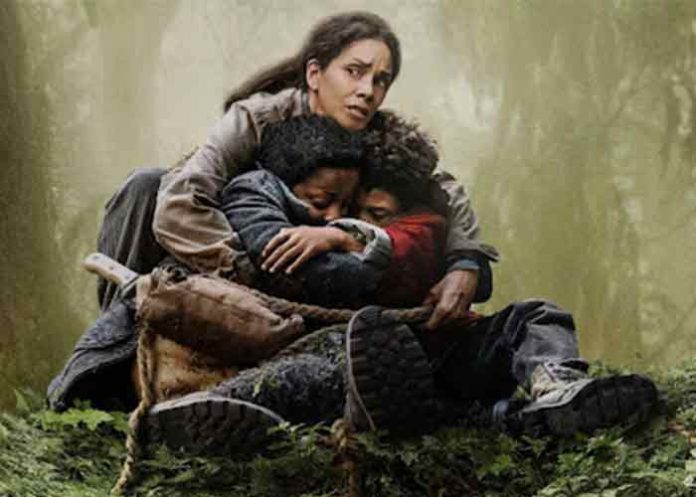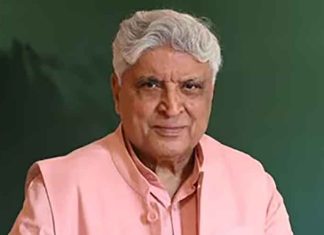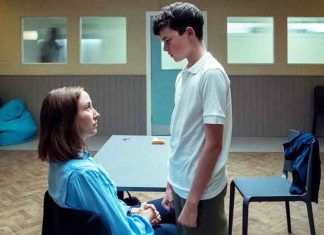New York, September 24, 2024 (Yes Punjab News)
Horror movies thrive on morbid moments, and “Never Let Go” is no exception, leaning heavily into the genre’s more unsettling and grotesque elements.
Directed by Alexandre Aja, known for his work on horror films like the remake of The Hills Have Eyes, this film follows a similar formula, delivering scenes that teeter between crass and pretentious. While the film aspires to build psychological tension, it struggles to rise above its hollow shock value, leaving viewers with a series of contrived scares and an unfocused plot.
A Familiar Face in an Unfamiliar Role: Halle Berry’s Performance
Halle Berry, the film’s main draw, plays a mother of two, grappling with the unsettling realities of their isolated life in the woods. Berry plays the role of a fiercely protective matriarch, living with her two sons, Samuel (Anthony B. Jenkins) and Nolan (Percy Daggs IV), in a remote cabin surrounded by dense, ominous forests. It’s a departure from her more glamorous roles, as she’s stripped of any Hollywood allure to become a hardened survivor.
Berry’s character is convinced that an unseen, malevolent force lurks in the woods — a threat she ominously refers to as “the Evil.” According to her, one touch from this mysterious entity will infect a person, dooming them to bring its curse back to the cabin and, by extension, the rest of the family. To stave off this fate, Berry and her sons tie themselves to thick ropes whenever they leave the house, a literal tether to safety.
The Tug-of-War Between Reality and Delusion
Much of Never Let Go centers around the central conceit: Is “the Evil” real, or is Berry’s character mentally unraveling? The movie initially sets up a tantalizing psychological game, but rather than exploring the tension between reality and paranoia, it opts for predictable jump scares and a convoluted series of events that never quite find their footing.
This ambiguity could have added depth, but the film never fully commits to either side of the question. Instead, it hovers in a murky middle ground, delivering moments of tension that ultimately lead nowhere. The story teases viewers with a few creepy moments at the start, only to lose momentum as the plot becomes increasingly nonsensical.
Child Actors in Over Their Heads
Berry’s fierce performance can’t quite save Never Let Go from its shortcomings, and while the child actors Anthony B. Jenkins and Percy Daggs IV give commendable performances, the film puts them through some distressing scenes that feel exploitative. Without a well-constructed emotional core, these moments come across as gratuitous rather than impactful.
One of the film’s more frustrating aspects is how it treats its younger characters. Both boys are given a significant amount of screen time, but the writing often reduces them to vehicles for bad decisions that push the plot forward. There’s little nuance in their development, and at times, it feels as if the film is punishing them for simply being children caught in a terrifying situation.
Morbid For Morbidity’s Sake
Aja’s direction, much like his previous works, leans heavily into the grotesque. Never Let Go serves up a series of grisly images that, while visually unsettling, often feel like they’re there for shock value rather than serving any real narrative purpose. There are moments where the film flirts with being genuinely horrifying, but these are few and far between.
Much of the film’s runtime feels like an exercise in discomfort, not necessarily fear. The repeated use of jump scares and “gross-out” moments overshadow any psychological tension that could have been built around the family dynamic or the nature of the supposed Evil. While some viewers might be drawn to the film’s bleak atmosphere, others will find it an unpalatable slog that substitutes depth for depravity.
Wasted Potential in a Tired Genre
At its core, Never Let Go feels like a missed opportunity. The premise — a mother and her children isolated in the woods, haunted by an unseen force — had the potential to be a gripping psychological thriller. But rather than crafting a story that delves into themes of paranoia, isolation, and maternal protection, the film defaults to cheap scares and a disjointed narrative. The ambiguity that could have been used to unsettle the audience instead feels like lazy storytelling.
Berry’s performance, while committed, isn’t enough to save the film from its weaknesses. By the time the plot reaches its climax, it’s hard to remain invested in the fate of the characters, especially after one of the boys makes an infuriatingly foolish decision that feels more like a contrived plot device than a believable character choice. After this, any remaining suspense quickly dissolves into frustration.
A Misstep in Modern Horror
In the end, Never Let Go is a muddled entry into the horror genre that relies too heavily on morbid imagery and not enough on cohesive storytelling. Halle Berry’s strong performance and the promising setup are quickly overshadowed by a lackluster plot and an overabundance of gratuitous shock moments. Fans of Aja’s previous work may find something to appreciate here, but for most, this film will feel like a wasted opportunity to tell a compelling horror story with psychological depth.
FAQs
1. Is “Never Let Go” worth watching for Halle Berry’s performance alone?
While Halle Berry delivers a strong and committed performance, the film’s weak plot and over-reliance on shock value may leave some viewers feeling underwhelmed despite her efforts.
2. How scary is Never Let Go?
The film offers some effective jump scares and a generally creepy atmosphere, but it leans more into grotesque and unsettling imagery than genuine psychological horror.
3. What is “the Evil” in Never Let Go?
The movie plays with the idea that “the Evil” could either be a supernatural force in the woods or a figment of the mother’s paranoia. However, the film never fully commits to either explanation, leaving its nature ambiguous.
4. How does Never Let Go compare to Alexandre Aja’s other horror films?
Like his previous works, Never Let Go focuses heavily on graphic and disturbing imagery. However, it lacks the narrative clarity and tension found in some of his earlier films like *The Hills Have Eyes*.
5. Is Never Let Go a psychological thriller or a straightforward horror movie?
The film attempts to blend psychological thriller elements with more traditional horror, but its lack of focus makes it difficult to categorize clearly. It leans more heavily into horror by the end.






















































































